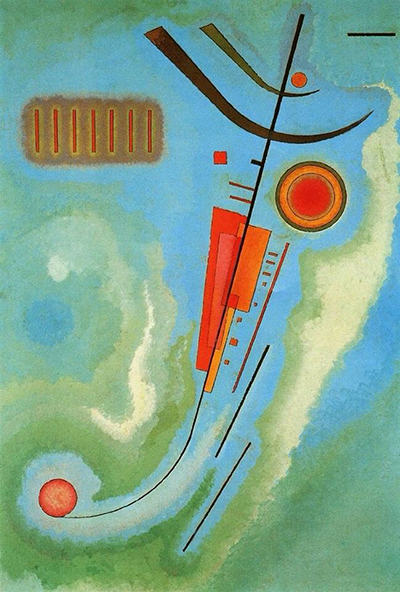This painting from 1930 marked the clearest homage by Wassily Kandinsky to another modern artist of that era, Fernand Leger. This bright work oozes the geometric work of the artist from the 1920s whilst providing evidence of where some of his artistic influences had come.
Whilst providing a dedication to his artistic rival, it would certainly be wrong to claim that this painting is in way in the style of Leger. It is completely that of Kandinsky. Leger himself had a very clear artistic signature which involved metallic finishes to abstract portraits. Similar to some of Malevich's work. He made use of the same primary colours as Kandinsky and they were both at the forefront of new modern art movements but that was where the similarities ended.
Perhaps we can conclude that Leger took the inspiration of Kandinsky into new avenues and considerable research has uncovered a line of influence in that direction. This painting underlines how that respect went both ways. Here we see the standard lines and shapes of an work by this artist at that time, with blues, greens and reds dominating this particular palette. Many of Kandinsky's paintings after this would make use instead of a much darker background which allowed the other colours to appear brighter. The colour scheme here feels perhaps a little more tranquil and soothing.
Kandinsky produced this painting as oils on card whilst living in the German city of Dessau. Whilst never truly letting go of his deep emotional connection to the country of his birth, Imperial Russia, he would settle very happily in Germany for many years and leave a significant legacy across both German and European abstract art. It was in this country that other great names also started to emerge such as Franz Marc, Ernst Ludwig Kirchner and the Swiss painter Paul Klee.




